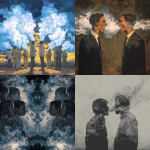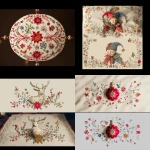Explore the Best AI Image Gallery

Beyond the Brush: How Wearable Tech is Redefining Artistic Expression
The realm of creativity has long been confined to traditional tools and mediums. However, the advent of wearable technology has shattered these boundaries, ushering in a new era of artistic expression where innovation and imagination intertwine seamlessly. From translating brainwaves into mesmerizing visuals to sculpting with light, wearable tech is empowering artists to transcend conventional limitations and explore uncharted territories.
Wearable Tech: A Canvas for Innovation
Wearable devices, such as smart glasses, augmented reality (AR) headsets, haptic suits, and biometric sensors, are transforming the creative process by providing artists with unprecedented control and interactivity.
- Smart Glasses and AR Headsets: These immersive technologies overlay digital elements onto the real world, allowing artists to paint in three-dimensional space, interact with virtual sculptures, or create installations that blend the physical and digital realms.
- Haptic Suits: By translating sound waves into tactile sensations, haptic suits enable artists to experience music and other auditory stimuli as physical textures. This opens up new avenues for creating multisensory art experiences that engage both the visual and the tactile senses.
- Biometric Sensors: Wearable sensors can track an artists physiological responses, such as heart rate, brainwaves, or muscle movements. This data can then be used to generate dynamic artwork that responds to the artists emotions, thoughts, or physical state, creating truly personalized and expressive creations.
Applications Across Artistic Disciplines
The versatility of wearable tech has far-reaching implications for various artistic disciplines:
- Visual Arts: Wearable devices empower artists to create interactive paintings, sculptures, and installations that respond to viewers movements or emotions. Imagine a sculpture that shifts its form based on the heartbeat of those standing nearby.
- Music Composition: Musicians can use wearable sensors to translate their gestures or bodily movements into musical notes or rhythms, blurring the lines between performance and composition.
- Dance and Performance Art: Wearable tech can enhance dance performances by allowing dancers to control lighting, sound effects, or projections through their movements, creating immersive and synchronized experiences.
- Filmmaking and Storytelling: AR headsets and smart glasses can be used to create interactive films and immersive narratives where viewers can explore different perspectives and influence the storyline.
Ethical Considerations in a Wearable World
As wearable tech becomes increasingly integrated into artistic creation, it is crucial to address potential ethical concerns:
- Data Privacy and Security: The collection of biometric data raises questions about privacy and the potential misuse of personal information. Artists and developers must prioritize secure data handling practices and transparent consent protocols.
- Accessibility and Inclusivity: Wearable tech should be accessible to individuals with diverse abilities and backgrounds. Developers need to consider ergonomic design, assistive features, and inclusive content creation.
- Authenticity and Originality: The use of AI algorithms in artistic creation raises questions about authorship and the nature of originality. It is important to establish clear guidelines and ethical frameworks that acknowledge the contributions of both human artists and AI systems.
The Future of Artistic Expression: A Convergence of Technology and Creativity
The future of artistic expression lies in a harmonious convergence of wearable technology and human creativity. As these technologies continue to evolve, we can expect even more groundbreaking applications that will push the boundaries of imagination and redefine our understanding of art.
- Enhanced Collaboration: Wearable tech will facilitate real-time collaboration between artists regardless of their location, allowing them to co-create projects and share ideas seamlessly.
- Personalized Artistic Experiences: Wearables will enable the creation of personalized art experiences tailored to individual preferences, creating a more immersive and engaging connection between artist and audience.
- Emergence of New Art Forms: The convergence of technology and creativity will undoubtedly give rise to entirely new art forms that we can only begin to imagine today.
The integration of wearable technology into the creative landscape is an exciting journey filled with endless possibilities. By embracing innovation while addressing ethical considerations, we can unlock a future where art transcends traditional boundaries and empowers individuals to express themselves in unprecedented ways.

](https://images.ai-img.art/thumbnails/150/655229c40961cb7ff5abd4b4190e02c94ea1a961106e7547a562649c945268be.webp)

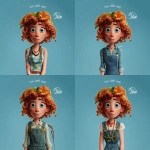




](https://images.ai-img.art/thumbnails/150/6c909fd6d38caac6572b592dd97831deb7d6562bba142798574677582676dfc1.webp)
](https://images.ai-img.art/thumbnails/150/184b4b030e30be0a6d51b544226cb4cf2271977814d935d3aaa2b7529355b3b7.webp)





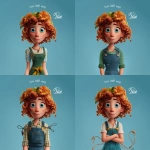
](https://images.ai-img.art/thumbnails/150/60973df1d727dbbf8e6922b7e4836814ab6012106eb9dcfe99aea7aec15f3710.webp)
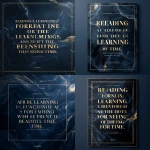
](https://images.ai-img.art/thumbnails/150/26c16e4f635deee86633de398088ca98d9bb748d6e7601436b07e882fab236cb.webp)





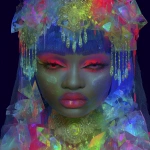

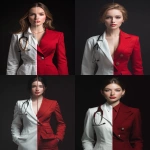
](https://images.ai-img.art/thumbnails/150/1202074d0d60b08b64d0f91f36468608aaac200a02b721cc8e6d8ec8a908432c.webp)

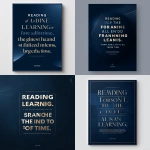



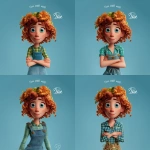








](https://images.ai-img.art/thumbnails/150/e6a179db327f0374ec327d0fdab48ac1f2dc47123eed103b0a41ed346280d07d.webp)

